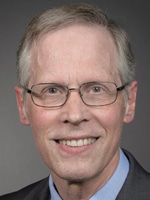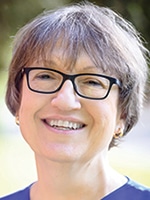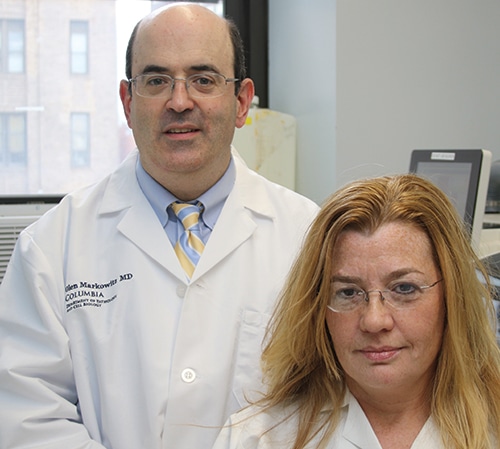Anne Paxton
April 2022—There are sudden crises like the SARS-CoV-2 pandemic. And then there are the simmering crises that can be temporarily overshadowed but inevitably re-emerge to command notice. In New York and in many other states, the decades-long shortage of laboratory staff—especially medical technologists and histotechnologists—has gone from simmer to rolling boil.
“COVID just blew the issue wide open,” says James Crawford, MD, PhD, professor and chair, Department of Pathology and Laboratory Medicine, and senior vice president of laboratory services, Northwell Health, New York. Among laboratory leaders, “the dominant topic of discussion in 2020 was laboratory testing for SARS-CoV-2. But the dominant topic as 2021 drew to a close, and now in 2022, is workforce.”
The spread of SARS-CoV-2 among the public and health care employees pushed laboratories to the breaking point, Dr. Crawford says. “None of us will forget the heroism of health care workers—the laboratory, intensive care, patient transport, first responders, everywhere you looked—particularly when we did not know the extent of our own risk.” Still, even as the pandemic seemed to be winding down, during the New York Omicron surge in January the laboratory workforce that was out due to COVID protocol peaked at 20 percent. “All of this occurred with health care not only going full throttle, but continuing to increase, which is what health care does.”

Dr. Crawford
The reduction in available workers throughout the economy, referred to as the “Great Resignation” or “Big Quit,” he notes, has received much attention. “I think it’s a reasonable observation that a significant part of the U.S. workforce took a look at their own job strengths and made adjustments.” But the laboratory workforce shortage is of so much longer standing, he says, that “we don’t even have to invoke the Big Quit to acknowledge the challenge we have in the laboratory industry.”
In 2020, handling the demand for testing of the population was the purpose when laboratory leaders of 12 of the 13 academic medical institutions across the state formed the New York State SARS-CoV-2 Testing Consortium, led by Dr. Crawford. The group’s focus broadened beyond testing in 2021 because of the growing number of open laboratory staff positions. A consortium survey conducted in May 2021 showed the average of open positions at member institutions had climbed to 12 percent and qualified candidates for posted positions were scarce. “So only 88 percent of positions in academic hospital laboratories are filled, which most administrators consider not enough staff for the laboratory to get by,” Dr. Crawford says. There is a pipeline problem as well, because a survey conducted by the Central New York State Clinical Laboratory Managers Association in November 2021 found that the fill rate for baccalaureate medical technologist training positions in New York was 83 percent, and for master’s level programs even lower at 70 percent.
The May 2021 consortium survey also found that a substantial minority of laboratory workers also had a second job at another laboratory. “You really should consider the laboratories to be less than 70 percent filled,” Dr. Crawford says. Add to that that half of the workforce is older than 55 and approaching retirement, and that the histologic technician workforce is particularly challenged—at the close of 2020 there were only 339 certified histologic technicians in New York—and laboratories find themselves faced with heavy constraints on hiring. (New York State does not have a certifying exam for histologic technologist.)
“For our consortium and for New York State,” advocacy for statutory and regulatory remedies is “the top agenda item, bar none,” Dr. Crawford says.
States vary widely in their proportion of laboratory personnel per 100,000 people. Florida, Michigan, and Ohio, for example, have more than 100 licensed medical technologists per 100,000, in contrast with the states with the most severe shortages of medical technologists: New York with 67 per 100,000 and California with 66 per 100,000. Dr. Crawford cautions that many factors contribute to these ratios. “Working in a university community in Central Florida is very different from working in downstate New York. But I would certainly make the argument that New York needs more licenses per 100,000.”
New York’s licensing requirement is very prescriptive, says Eloise Aita, PhD, president of the New York State Clinical Laboratory Association (NYSCLA). “In 2006, the legislature looked at the requirements for medical technology programs throughout the U.S. and unfortunately wrote those requirements into law and regulation. And they haven’t changed since then, although the national standards have changed.”
Dr. Aita
“Many degree-granting institutions, for example, don’t require 720 hours of clinical rotation. Now, 500 hours is fine, but New York still requires 720.” The New York State Department of Education also does not recognize the ASCP exam as the sole basis for licensure. Until recently, out-of-state laboratory staff were required to retake the ASCP certifying exam if they had taken it before Sept. 1, 2001. In other states a degree in a field other than medical technology, such as biological science, could qualify someone for licensure, but New York regulations do not allow this.
Licensure thus becomes a significant factor when laboratories want to hire people with experience, Dr. Aita contends. “Someone with 10 years’ experience in another state” may take online courses to fill some of New York’s extra requirements, “but they’re not going to do a clinical rotation for no pay when they have 10 years of laboratory experience under their belt.” The course in ethics that New York also requires can be done online, but “if you’re missing biochemistry, you need to do a biochemistry course with a laboratory.”
This means that “you can’t hire a person until you know they are able to get a license,” Dr. Aita adds. “So if you have a good candidate in front of you and that candidate is interviewing in New York but also in New Jersey or Pennsylvania, they’ll get a job offer from a state without a licensure requirement much sooner than from a New York lab, because we don’t know if they’re going to qualify.”
In the 1970s there were about 800 accredited medical technology programs in the U.S., compared with fewer than 300 today, Dr. Aita estimates. But despite the chronic need for trained technologists, programs today typically are filled at a capacity of only 80 percent. On average only about 250 medical technologists each year graduate from the four-year programs for medical technology in New York State.
The resulting pressures on laboratories in New York are such that “a lot of work is moving out of New York to states where licensure is much less of an issue and maybe not an issue at all. Some hospitals have even had to shut down their microbiology laboratories and oftentimes they’re sending that work to laboratories in states that do not license laboratory staff,” Dr. Aita says. Many hospitals have reduced their laboratories to rapid-response laboratories. “Everything else is going out to a reference laboratory.”

Dr. Glen Markowitz and Doreen Hebert at Columbia. A potential short-term solution to the histotechnician shortage, Dr. Markowitz says, “would be to allow experienced, licensed histotechs, particularly supervisors, some limited capacity to train people on the job—people who don’t necessarily have the required college degree.”
California also has a licensing requirement but does not seem to have the vacancy problem common in New York, Dr. Aita notes. This could be partly due to the higher salaries in California, but “I’m happy to say that salaries in New York have been improving over the years and salary is not as big a hurdle as in the past.” The biggest challenge: “Nobody knows about us. Laboratory medicine is the hidden gem of health care,” she says.
People may be a little more familiar with fields like radiologic technology because they might interact with a technologist who is taking images. “Whereas you never meet anyone in the laboratory. It’s like a black box.” In recent talks with about 75 school counselors, she says, “maybe two of them were familiar with laboratory medicine as a career, but only because they knew someone who worked in a hospital.”
“One of the things NYSCLA is working on is making the profession more visible. In an odd way COVID media coverage of testing has helped us with that, so I feel this is a great opportunity for us to jump on this newfound visibility window.”
 CAP TODAY Pathology/Laboratory Medicine/Laboratory Management
CAP TODAY Pathology/Laboratory Medicine/Laboratory Management
